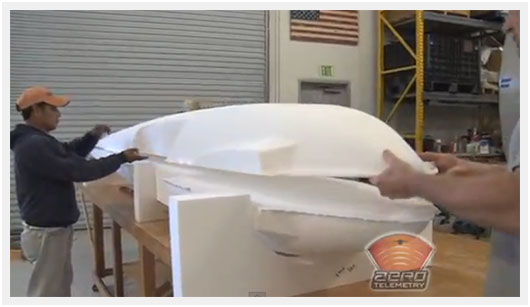Video: Killer Drones - The Future Of Crop Dusting?
 Monday, June 9, 2014 at 07:54AM
Monday, June 9, 2014 at 07:54AM
The idea of killer drones is fine with me if they're all about killing insects that hurt crops. In fact, I'd say that the idea of using Quadcopter-style drones for crop dusting is probably the most logical and viable use for these unusual flying machines.
 Video screenshot: view from above a crop dusting quadcopter
Video screenshot: view from above a crop dusting quadcopter
The video above shows a quad from the people at armcopters.com demonstrating an electric powered drone with a nice spray rig installed. Their website says they have systems with 22 and 66 pound payload capacities, tho I don't see them available for purchase at the moment. You might think that payload impractical as a crop duster, but the ability to more accurately target the crops, and do so from a much lower altitude greatly reduces the amount of chemical required to be dispensed to be effective. Even more, the powerful downwash from the rotors helps drive that chemical deeper into the crops where it'll be even more effective.
 Video screenshot: underneath view of the crop dusting quadcopter
Video screenshot: underneath view of the crop dusting quadcopter
While we continue to see electric drone capabilities improve rapidly, their time aloft is often still relatively limited due to battery capacity. That's where an idea like the gas-powered collective pitch quad concept from Curtis Youngblood might be perfectly suited to applications needing higher payloads and much longer durations.
Without a doubt, the future of the drone in this world is a sticky wicket, but I gotta say I like 'em as crop dusters!
Like this post? Tell your friends... use the 'share' or 'email' article links below - thanx : )



























































































